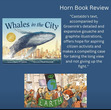Nancy F. Castaldo's Blog, page 16
February 10, 2017
NF 10 x 10 2017
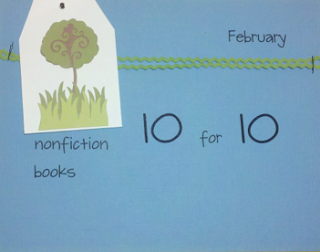
Here are ten STEM books I could not live without...nor should you!
These ten titles include different ecosystems, speak to biodiversity, introduce readers to a world reknowned female scientist, talk about big topics, present the scientific method, and are ENGAGING!

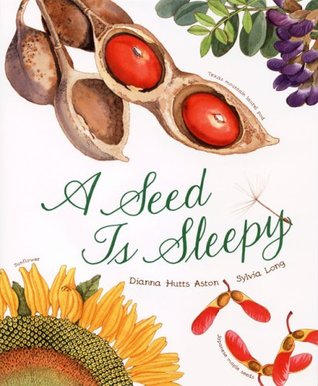

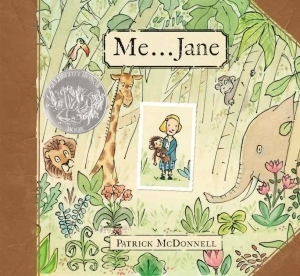


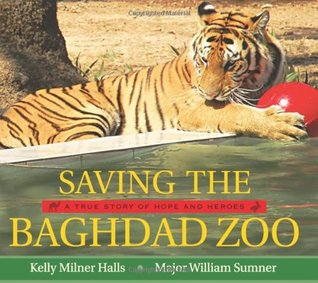


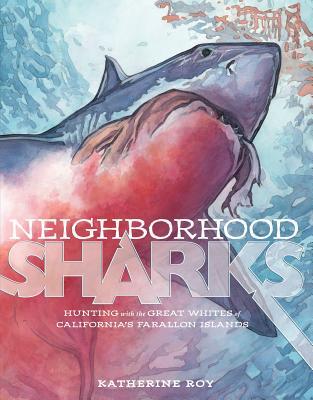
Published on February 10, 2017 05:26
August 26, 2016
National Dog Day
It's National Dog Day! Hurrah, an entire day to celebrate man's (and woman's) best friend! In honor of the day I've put together a reading list of dog-inspired titles for you to enjoy!
On the nonfiction shelf there are many to choose from. I had a blast researching Sniffer Dogs and I know many of my fellow writers have also enjoyed meeting so many extraordinary canines. Check out Nancy Furstinger's Paws of Courage and her biography of Henry Bergh. Both are well researched and engaging reads.
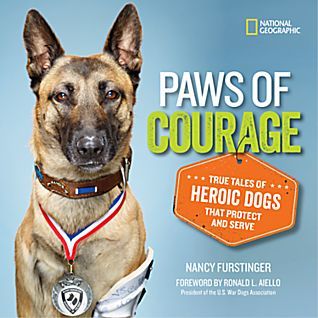
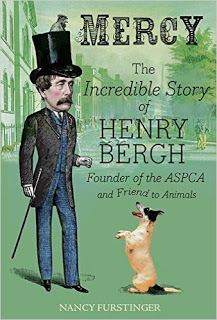
Super Sniffers by Dorothy Patent is perfect for younger readers!
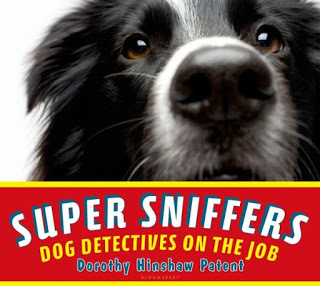
I have so many favorite fiction titles - Here are a few to add to your shelves!
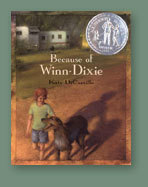
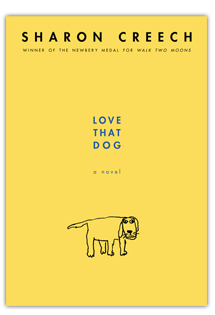
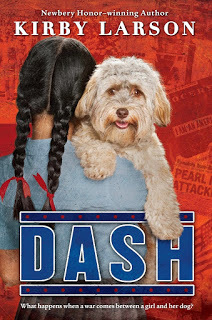
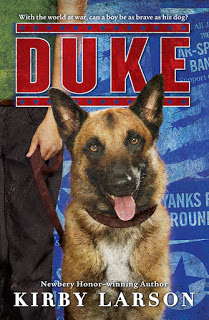
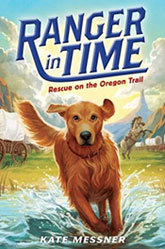
Of course, there are also the dog titles that tug on your heartstrings and are better read with a box of tissues.
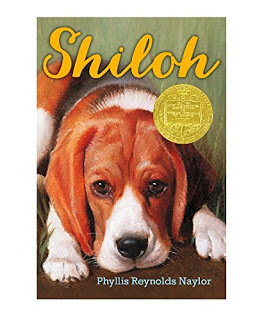
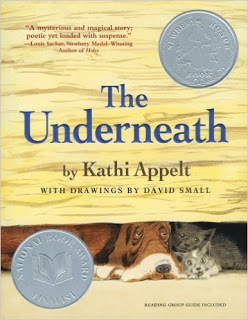
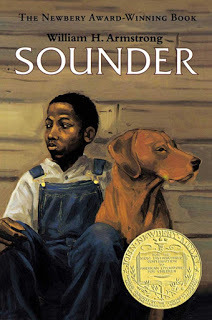
And picture books!
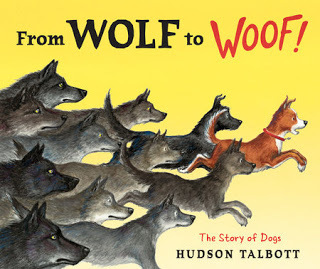
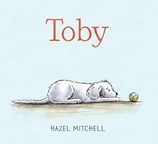
Whatever you decide to pull off your shelf today - enjoy! And give your pooch a hug!
On the nonfiction shelf there are many to choose from. I had a blast researching Sniffer Dogs and I know many of my fellow writers have also enjoyed meeting so many extraordinary canines. Check out Nancy Furstinger's Paws of Courage and her biography of Henry Bergh. Both are well researched and engaging reads.


Super Sniffers by Dorothy Patent is perfect for younger readers!

I have so many favorite fiction titles - Here are a few to add to your shelves!





Of course, there are also the dog titles that tug on your heartstrings and are better read with a box of tissues.



And picture books!


Whatever you decide to pull off your shelf today - enjoy! And give your pooch a hug!
Published on August 26, 2016 06:19
May 27, 2016
The Reading List
I am so excited to spend some time this week reading! I've finished two very hectic months of book festivals, conferences, and school visits, and now I can settle back into spending time researching my next Houghton Mifflin title and READING!
On my list -- I just purchased Lab Girl by Hope Jahren. Even though I spent years researching THE STORY OF SEEDS and spending time with botanists and other seed scientists, the subject will stay with me forever. And this book looks beautiful.
Following that theme - I'd love to read Elizabeth Gilbert's Signature of All Things. These three would make a great trilogy!
On the kid lit front:
I also downloaded the audio book of The War That Saved My Life by Kimberly Brusker Bradley. This book has been on my TO READ list since it came out. I am so happy to have the time now to listen to it.
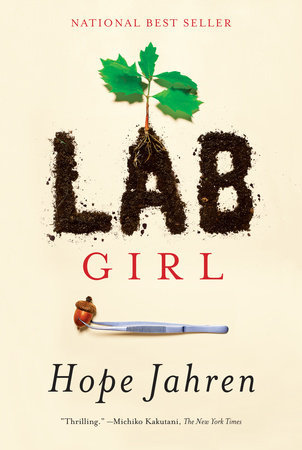
On my list -- I just purchased Lab Girl by Hope Jahren. Even though I spent years researching THE STORY OF SEEDS and spending time with botanists and other seed scientists, the subject will stay with me forever. And this book looks beautiful.
Following that theme - I'd love to read Elizabeth Gilbert's Signature of All Things. These three would make a great trilogy!
On the kid lit front:
I also downloaded the audio book of The War That Saved My Life by Kimberly Brusker Bradley. This book has been on my TO READ list since it came out. I am so happy to have the time now to listen to it.

Published on May 27, 2016 07:02
May 18, 2016
OK to GMOs?
What brings me back to this blog? A new report on GMOs has been released by the National Academies of Sciences, Engineering, and Medicine on genetically engineered crops. This quote was cited on CBS This Morning: "...no substantiated evidence that foods from GE crops were less safe than foods from non-GE crops." Monsanto and other companies selling GE seeds are basking in this validation.
But, it also determined that genetically engineering crops did not produce substantial yields as the companies promised. This was the main reason for producing them in the first place.
So, both sides are claiming a victory here.
But there is a bigger picture -- the impact of GE crops on our environment. The impact on biodiversity is vast.
Most of what we eat is genetically modified -- 90% of US corn, soybeans, and sugar beets.
And what about labelling? We still deserve to know what we are eating and the ability to make our own choices.
I feel like we are race horses with blinders on speeding ahead without looking around us. My only hope is that this, and other studies, further our discussion on this subject.
Read more about genetically modified seeds in THE STORY OF SEEDS: From Mendel's Garden to Your Plate, and How There's More of Less To Eat Around The World.
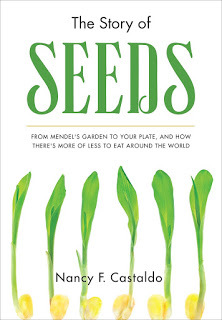
But, it also determined that genetically engineering crops did not produce substantial yields as the companies promised. This was the main reason for producing them in the first place.
So, both sides are claiming a victory here.
But there is a bigger picture -- the impact of GE crops on our environment. The impact on biodiversity is vast.
Most of what we eat is genetically modified -- 90% of US corn, soybeans, and sugar beets.
And what about labelling? We still deserve to know what we are eating and the ability to make our own choices.
I feel like we are race horses with blinders on speeding ahead without looking around us. My only hope is that this, and other studies, further our discussion on this subject.
Read more about genetically modified seeds in THE STORY OF SEEDS: From Mendel's Garden to Your Plate, and How There's More of Less To Eat Around The World.

Published on May 18, 2016 05:13
July 19, 2015
At the Farm
So, what's this I hear about kale? Can this super food actually be bad for you? Do not panic. There is hope! So before you opt out of eating one of the healthiest greens around, please read this thoughtful and informative post from my fave farm market -- then go straight to your own market and find out how and where they grow their kale.
"Ok. Let's get this straight people. Before you show up to The Berry Farm with pitchforks and torches, let's take a minute to breathe and think this through.Yes, plants that grow in soil use their roots to uptake nutrients and water for their growth above the ground. And yes, plants are capable of also pulling up heavy metals and other forms of soil contamination.Brassicas, (Cole crops in the family Brassicaceae) like kale, collards & mustard, are particularly reputed as having the ability to "photo-remediate" the soil. What this means is that these plants are capable of up taking minerals (desirable and undesirable) from the soil and concentrating them in their above ground biomass aka leaves, stems & flowers.Ordinarily, the term photoremediation is favorable. For example, the use of sunflowers to up take heavy metals from the soil is a good thing because the heavy metals (such as lead) are removed safely from the soil and concentrated in the flowers. The plants can then be removed, thus removing contamination from the soil. So what does this mean? Well for starters, let me just lay out the facts for you about how we grow things here at The Berry Farm:1.) The Berry Farm is situated on agricultural land that is both historically & currently the best & most fertile in the county.
2.) Our farm land has historical agricultural roots. (Yes that pun was intended)
3.) We care about our soil. We practice crop rotation both outside on our fields & inside in our greenhouses. We utilize cover crops & green manures to replenish the soils nutrients.
4.) We make our own compost. We use organic waste (food scraps: egg shells, banana peels, apple cores, spent fruit & veges), grass clippings, and leaf mulch from our farm. We use this compost in both our raised beds and throughout our greenhouses." The Berry Farm, Chatham, NY
Now, don't you feel better? I know I do!
"Ok. Let's get this straight people. Before you show up to The Berry Farm with pitchforks and torches, let's take a minute to breathe and think this through.Yes, plants that grow in soil use their roots to uptake nutrients and water for their growth above the ground. And yes, plants are capable of also pulling up heavy metals and other forms of soil contamination.Brassicas, (Cole crops in the family Brassicaceae) like kale, collards & mustard, are particularly reputed as having the ability to "photo-remediate" the soil. What this means is that these plants are capable of up taking minerals (desirable and undesirable) from the soil and concentrating them in their above ground biomass aka leaves, stems & flowers.Ordinarily, the term photoremediation is favorable. For example, the use of sunflowers to up take heavy metals from the soil is a good thing because the heavy metals (such as lead) are removed safely from the soil and concentrated in the flowers. The plants can then be removed, thus removing contamination from the soil. So what does this mean? Well for starters, let me just lay out the facts for you about how we grow things here at The Berry Farm:1.) The Berry Farm is situated on agricultural land that is both historically & currently the best & most fertile in the county.
2.) Our farm land has historical agricultural roots. (Yes that pun was intended)
3.) We care about our soil. We practice crop rotation both outside on our fields & inside in our greenhouses. We utilize cover crops & green manures to replenish the soils nutrients.
4.) We make our own compost. We use organic waste (food scraps: egg shells, banana peels, apple cores, spent fruit & veges), grass clippings, and leaf mulch from our farm. We use this compost in both our raised beds and throughout our greenhouses." The Berry Farm, Chatham, NY
Now, don't you feel better? I know I do!
Published on July 19, 2015 07:45
April 27, 2015
Nonfiction Monday - On The Trail
Read everything.
When I am researching a book I try to read everything on the subject and then some. Sometimes that reading takes me back...way back...to things I've written earlier. It could be a magazine article on the topic of my book or even a report I wrote back in college.
In this case, I dug out an old report I wrote in elementary school on dolphins. It's a topic I've returned to before when I wrote OCEANS. I remember writing this report. I was totally into it. I read Nat Geo and every book I could find on the topic -- which wasn't difficult because my mom had an extensive library right at home.
Looking at this report I can see the nonfiction author I was going to be. Not only was it complete, it had 9 chapters, was illustrated, and included a bibliography.
I laughed as I read the comments inside. My teacher circled the word BOVINE and wrote beside it - What does this mean? Could she have not known that, or was she suggesting I should have defined the word in text?
The report earned me a grade of O+ which is short for Outstanding + and this note:
Nancy,
It is my pleasure to read such a report. A tremendous amount of work on your part. I'm sure if I had to ever write a report about dolphins I would turn yours in instead of mine.
BAM! the 5th or 6th grader in me is still beaming and thankful my teacher was so encouraging.
Reading this will help me get back into that middle grade head as I write my WIP. What excited me then will probably still excite my MG readers now.
So for today, I'm reading everything and taking some time to connect with my inner middle grader.
When I am researching a book I try to read everything on the subject and then some. Sometimes that reading takes me back...way back...to things I've written earlier. It could be a magazine article on the topic of my book or even a report I wrote back in college.
In this case, I dug out an old report I wrote in elementary school on dolphins. It's a topic I've returned to before when I wrote OCEANS. I remember writing this report. I was totally into it. I read Nat Geo and every book I could find on the topic -- which wasn't difficult because my mom had an extensive library right at home.
Looking at this report I can see the nonfiction author I was going to be. Not only was it complete, it had 9 chapters, was illustrated, and included a bibliography.
I laughed as I read the comments inside. My teacher circled the word BOVINE and wrote beside it - What does this mean? Could she have not known that, or was she suggesting I should have defined the word in text?
The report earned me a grade of O+ which is short for Outstanding + and this note:
Nancy,
It is my pleasure to read such a report. A tremendous amount of work on your part. I'm sure if I had to ever write a report about dolphins I would turn yours in instead of mine.
BAM! the 5th or 6th grader in me is still beaming and thankful my teacher was so encouraging.
Reading this will help me get back into that middle grade head as I write my WIP. What excited me then will probably still excite my MG readers now.
So for today, I'm reading everything and taking some time to connect with my inner middle grader.
Published on April 27, 2015 06:50
April 8, 2015
Research Brings the World Closer
I am in that in-between stage with my writing. I'm researching and writing one book as I finish up the close examination of pages for the last book that will be on shelves soon. It means I have a foot in each book. My thoughts move from one subject to the other.
Each time I work on a book I discover new worlds, meet new people, and travel to new places. Research is a gift to myself. It widens my world. Just like when you travel on vacation and become intimate with a new place, research accomplishes the same thing. For the last book I travelled a lot -- as far away as Russia. But I also spoke to scientists as far away as Iraq.
I watch the news differently now. I think of the people I have met and worked with. I wonder about their safety. I wonder if they are able to continue working.
I watch, frustrated, knowing that I can't help, but hope that when their stories come out into the world, other people with watch a little differently too.
Each time I work on a book I discover new worlds, meet new people, and travel to new places. Research is a gift to myself. It widens my world. Just like when you travel on vacation and become intimate with a new place, research accomplishes the same thing. For the last book I travelled a lot -- as far away as Russia. But I also spoke to scientists as far away as Iraq.
I watch the news differently now. I think of the people I have met and worked with. I wonder about their safety. I wonder if they are able to continue working.
I watch, frustrated, knowing that I can't help, but hope that when their stories come out into the world, other people with watch a little differently too.
Published on April 08, 2015 10:58
March 2, 2015
Nonfiction Monday -- On the Trail
I'm excited to be working on another book for Houghton Mifflin. I had a blast working on Sniffer Dogs and my forthcoming YA title, The Story of Seeds. I thought it might be fun to blog while I research the next one, since nonfiction is really all about the research.
After a thorough online search to find as much information about my subject as I can, I usually head off to the library. Sometimes I visit my local library, but often I need to go to a bigger library at a university.
For this book, I headed to a university science library.
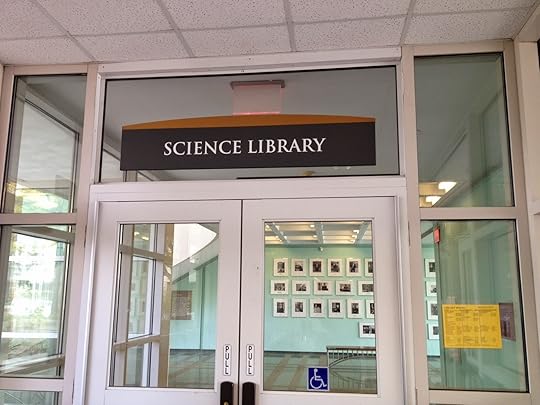
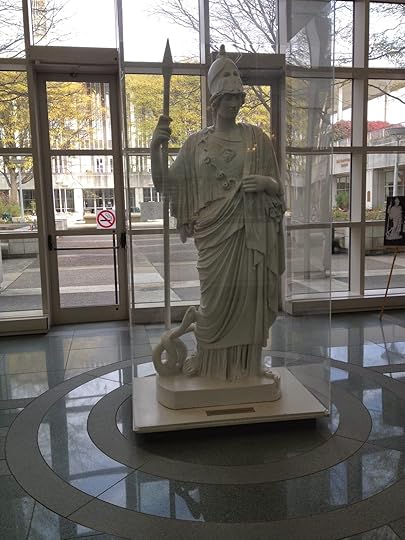 The Roman goddess of wisdom - Minerva graces the SUNY Albany Science Library entrance
The Roman goddess of wisdom - Minerva graces the SUNY Albany Science Library entrance
with the Latin motto "sapientia et sua docent cause" meaning "Wisdom for its own sake and for the sake of teaching"
This is the spot where I can find, not only current information on my topic, but historical texts that can provide me with the history of my subject. And it's a great library because I can roam through the stacks to find the book I'm looking for. Many libraries don't have open stacks. You have to give a list of books to the librarian and then the books are retrieved for you. The problem is that you don't get to find neighboring books that might provide you with the jewel you never expected.
This first stop on the research trail is much different than the other stops I'll take later on when I'm meeting scientists in the field, but it's a very important first step. And for me - it's loads of fun as I make my initial discoveries.
After a thorough online search to find as much information about my subject as I can, I usually head off to the library. Sometimes I visit my local library, but often I need to go to a bigger library at a university.
For this book, I headed to a university science library.

 The Roman goddess of wisdom - Minerva graces the SUNY Albany Science Library entrance
The Roman goddess of wisdom - Minerva graces the SUNY Albany Science Library entrancewith the Latin motto "sapientia et sua docent cause" meaning "Wisdom for its own sake and for the sake of teaching"
This is the spot where I can find, not only current information on my topic, but historical texts that can provide me with the history of my subject. And it's a great library because I can roam through the stacks to find the book I'm looking for. Many libraries don't have open stacks. You have to give a list of books to the librarian and then the books are retrieved for you. The problem is that you don't get to find neighboring books that might provide you with the jewel you never expected.
This first stop on the research trail is much different than the other stops I'll take later on when I'm meeting scientists in the field, but it's a very important first step. And for me - it's loads of fun as I make my initial discoveries.
Published on March 02, 2015 06:24
February 4, 2015
Raising a Daughter - Creating a Curious Learner
I just read a blog about how important it is to read science stories to your daughter. I completely agree! Pull out the nonfiction alongside the fairytales!
I also feel it is equally important or more important to encourage your daughters to be curious learners. Read the books, but also get them outside to enable them to have their own experiences with the world around them. Take them on walks in the woods. Show them how much fun a museum can be. Listen to all kinds of music. Providing your daughter with all of those experiences will help them conquer anything that comes there way. Teach them to question. And also show them that there is hardly ever one right answer (except in math). Even science doesn't answer everything.
Explore books of all kinds. Read the fairytales and come up with different endings. And yes, pull out the nonfiction, but don't just read it - explore it!
I also feel it is equally important or more important to encourage your daughters to be curious learners. Read the books, but also get them outside to enable them to have their own experiences with the world around them. Take them on walks in the woods. Show them how much fun a museum can be. Listen to all kinds of music. Providing your daughter with all of those experiences will help them conquer anything that comes there way. Teach them to question. And also show them that there is hardly ever one right answer (except in math). Even science doesn't answer everything.
Explore books of all kinds. Read the fairytales and come up with different endings. And yes, pull out the nonfiction, but don't just read it - explore it!
Published on February 04, 2015 07:51
November 17, 2014
Jip - Doctor Doolittle's Amazing Sniffer Dog
When I was a little girl I was entranced by Doctor Doolittle. It wasn't a crush or anything. I just wanted to be like him. I wanted to talk to animals too! I studied animal behavior in college and even wrote on animal communication, but alas, I could never talk to animals the way he could. He was a super hero!
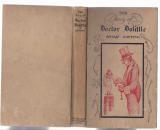
Last week I listened to Doctor Doolittle while I was driving to and from our Falling Leaves writing retreat. Of course it was different from the movie, but it was still magical for me. And guess what? It features one of the best sniffer dogs in literature -- Jip!
Here's one of my favorite paragraphs about Jip's sniffing:
"Jip smelt the ring and said,"That's no good. Ask him if he has anything else that belonged to his uncle."Then the boy took from his pocket a great, big red handkerchief and said, "This was my uncle's too."As soon as the boy pulled it out, Jip shouted,"SNUFF, by Jingo!—Black Rappee snuff. Don't you smell it? His uncle took snuff— Ask him, Doctor."The Doctor questioned the boy again; and he said, "Yes. My uncle took a lot of snuff.""Fine!" said Jip. "The man's as good as found. 'Twill be as easy as stealing milk from a kitten. Tell the boy I'll find his uncle for him in less than a week. Let us go upstairs and see which way the wind is blowing."" - The Story of Doctor Doolittle by Hugh Lofting
Jip - the sniffer dog! Jip is searching across the sea using the power of his nose just like Tucker on the cover of Sniffer Dogs.
"Can you really smell all those different things in this one wind?" asked the Doctor."Why, of course!" said Jip. "And those are only a few of the easy smells—the strong ones. Any mongrel could smell those with a cold in the head. Wait now, and I'll tell you some of the harder scents that are coming on this wind—a few of the dainty ones."Then the dog shut his eyes tight, poked his nose straight up in the air and sniffed hard with his mouth half-open.
And later on Jip remarks, "No wonder those silly eagles couldn't see him!—It takes a dog to find a man."
Hugh Lofting was right when he wrote those words for Jip! It does take a dog to find a man!
Have you read about any sniffer dogs in books you've read? There are many others since Doctor Doolittle was written in 1920. Tell me what you've read and I'll include it on my website!

Last week I listened to Doctor Doolittle while I was driving to and from our Falling Leaves writing retreat. Of course it was different from the movie, but it was still magical for me. And guess what? It features one of the best sniffer dogs in literature -- Jip!
Here's one of my favorite paragraphs about Jip's sniffing:
"Jip smelt the ring and said,"That's no good. Ask him if he has anything else that belonged to his uncle."Then the boy took from his pocket a great, big red handkerchief and said, "This was my uncle's too."As soon as the boy pulled it out, Jip shouted,"SNUFF, by Jingo!—Black Rappee snuff. Don't you smell it? His uncle took snuff— Ask him, Doctor."The Doctor questioned the boy again; and he said, "Yes. My uncle took a lot of snuff.""Fine!" said Jip. "The man's as good as found. 'Twill be as easy as stealing milk from a kitten. Tell the boy I'll find his uncle for him in less than a week. Let us go upstairs and see which way the wind is blowing."" - The Story of Doctor Doolittle by Hugh Lofting
Jip - the sniffer dog! Jip is searching across the sea using the power of his nose just like Tucker on the cover of Sniffer Dogs.
"Can you really smell all those different things in this one wind?" asked the Doctor."Why, of course!" said Jip. "And those are only a few of the easy smells—the strong ones. Any mongrel could smell those with a cold in the head. Wait now, and I'll tell you some of the harder scents that are coming on this wind—a few of the dainty ones."Then the dog shut his eyes tight, poked his nose straight up in the air and sniffed hard with his mouth half-open.
And later on Jip remarks, "No wonder those silly eagles couldn't see him!—It takes a dog to find a man."
Hugh Lofting was right when he wrote those words for Jip! It does take a dog to find a man!
Have you read about any sniffer dogs in books you've read? There are many others since Doctor Doolittle was written in 1920. Tell me what you've read and I'll include it on my website!
Published on November 17, 2014 10:57

